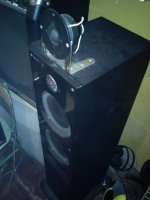Here is some porn from said amplifier construction, a bit offtopic but we all like to see them 😀
Attachments
-
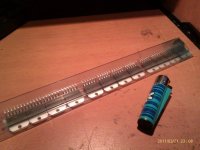 175807_10151275633642649_563396057_o.jpg88.2 KB · Views: 219
175807_10151275633642649_563396057_o.jpg88.2 KB · Views: 219 -
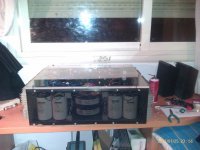 706312_10151275631512649_1582132743_o.jpg89.4 KB · Views: 85
706312_10151275631512649_1582132743_o.jpg89.4 KB · Views: 85 -
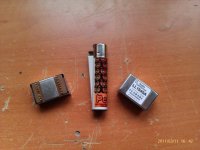 705218_10151275632777649_2045444893_o.jpg80.7 KB · Views: 63
705218_10151275632777649_2045444893_o.jpg80.7 KB · Views: 63 -
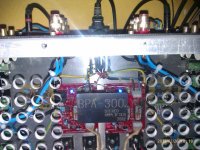 705145_10151275632637649_1132898454_o.jpg199.3 KB · Views: 74
705145_10151275632637649_1132898454_o.jpg199.3 KB · Views: 74 -
 704799_10151275633377649_1005561098_o.jpg75 KB · Views: 88
704799_10151275633377649_1005561098_o.jpg75 KB · Views: 88 -
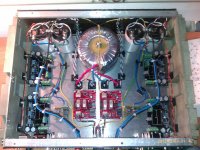 703554_10151275631947649_518919024_o.jpg217.4 KB · Views: 104
703554_10151275631947649_518919024_o.jpg217.4 KB · Views: 104 -
 465003_10151275631862649_1349996203_o.jpg202.3 KB · Views: 190
465003_10151275631862649_1349996203_o.jpg202.3 KB · Views: 190 -
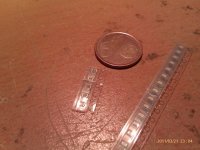 339777_10151275633772649_1505369091_o.jpg182.9 KB · Views: 189
339777_10151275633772649_1505369091_o.jpg182.9 KB · Views: 189 -
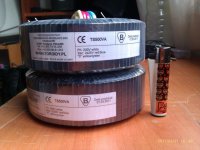 286612_10151275633072649_992872774_o.jpg95.3 KB · Views: 216
286612_10151275633072649_992872774_o.jpg95.3 KB · Views: 216 -
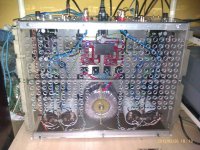 201204_10151275632452649_1124676714_o.jpg225.7 KB · Views: 211
201204_10151275632452649_1124676714_o.jpg225.7 KB · Views: 211
Is that 4 bridge rectifiers being fed from 2 secondary windings?
If so, could you show what you have wired and explain why it works?
Or
have you got 4 secondary windings each dedicated to a separate bridge rectifier?
If so, could you show what you have wired and explain why it works?
Or
have you got 4 secondary windings each dedicated to a separate bridge rectifier?
Is that 4 bridge rectifiers being fed from 2 secondary windings?
If so, could you show what you have wired and explain why it works?
Or
have you got 4 secondary windings each dedicated to a separate bridge rectifier?
That is, 4 separated secondary windings. On each transformer, one secondary is blue and the other is red.
I finally got a Behringer CX2310, it works pretty good and because of having a low pass output (subwoofer channel) it has been pretty easy to add a subwoofer that I recently got.
By the way, those are the speakers. I changed the tweeters when one of them burned some years ago, so those are not the original ones. Anyway they sound better to me than the original ones, and they were cheaper.
By the way, those are the speakers. I changed the tweeters when one of them burned some years ago, so those are not the original ones. Anyway they sound better to me than the original ones, and they were cheaper.
Attachments
Mounting the tweeters as you have is the worst possible way. There will be large frequency response anomalies caused by diffraction at the edge of the tweeter face plate, as well as the mounting brackets and the enclosure edge. Good tweeter integration nearly always require flush tweeter mounting and smooth baffle transitions.By the way, those are the speakers. I changed the tweeters when one of them burned some years ago, so those are not the original ones. Anyway they sound better to me than the original ones, and they were cheaper.
You don't have to duplicate the passive filters' transfer functions but that is probably the best way to get the result to sound decent if you aren't going to measure the response of the drivers. Stock crossover filters may or may not work well.
If you are going to measure the driver responses then you can use any filter you want and see if you do better than Kef with the drivers.
What does really mean "to do better" in that context? Should I just aim for the most linear frecuency response?
I recently got some measurement microphones (diy with panasonic capsules and a Behringer ECM8000) and playing around with REW, SMAART and other RTA/sweep tone transfer/impulse measurement software. So this is getting serious now.
I am going to get a DCX2496 to be able to try different filters and slopes and EQ. While the CX2310 is a very nice unit, it falls short in versatility.
regiregi22,
The DCX is a good choice for a dedicated hobbyist. It allows for various very good setups. You can try several and choose the one(s) you prefer. A requirement for good results is good measurement skills and a reasonable understanding of the objectives.
A good objective for the XO/delay settings would be to provide close phase tracking on the listening axis throughout the XO range. This will provide a smooth SPL through that range and a stable frontal lobe that will maximize the uniformity in the LP area.
As noted above one good option is to target an acoustic LR-24. Assuming the current passive XO is lower order, it would also be safe to lower the XO freq a little to slightly improve the off axis SPL uniformity.
The DCX EQ capabilities provides a great opportunity for sound improvement, but can be challenging to understand and effectively implement. A target curve (house curve) can be set to best accommodate your room/speaker characteristics and your preferences.
For a DIY audio hobbyist the DCX opens up all sorts of listening and learning possibilities. Done well, it is like owning many different good speakers and being able to switch between them as desired.
It would be interesting to fully measure the acoustic characteristics with the current passive XO to benchmark it in your room. This should include measurements of the individual XO sections so the current phase tracking is documented.
It will take a real commitment to learning the needed skills to get the best result. That said, there is probably all the help you need here to help you work through a practical example to get you started. It is not quick or easy process however.
The DCX is a good choice for a dedicated hobbyist. It allows for various very good setups. You can try several and choose the one(s) you prefer. A requirement for good results is good measurement skills and a reasonable understanding of the objectives.
A good objective for the XO/delay settings would be to provide close phase tracking on the listening axis throughout the XO range. This will provide a smooth SPL through that range and a stable frontal lobe that will maximize the uniformity in the LP area.
As noted above one good option is to target an acoustic LR-24. Assuming the current passive XO is lower order, it would also be safe to lower the XO freq a little to slightly improve the off axis SPL uniformity.
The DCX EQ capabilities provides a great opportunity for sound improvement, but can be challenging to understand and effectively implement. A target curve (house curve) can be set to best accommodate your room/speaker characteristics and your preferences.
For a DIY audio hobbyist the DCX opens up all sorts of listening and learning possibilities. Done well, it is like owning many different good speakers and being able to switch between them as desired.
It would be interesting to fully measure the acoustic characteristics with the current passive XO to benchmark it in your room. This should include measurements of the individual XO sections so the current phase tracking is documented.
It will take a real commitment to learning the needed skills to get the best result. That said, there is probably all the help you need here to help you work through a practical example to get you started. It is not quick or easy process however.
Isn't anybody able to know the type of crossover used for both high and low pass? I mean the order, sallen-key, butterworth, etc...
The problem is that the ultimate "type" of crossover must include the response of the drive units in the enclosure as part of the filter. The passive crossover will have some built-in equalization for baffle step and other response anomalies in the drivers. An off-the-shelf active filter at the same nominal frequency and order will not duplicate this response.
It would be interesting to fully measure the acoustic characteristics with the current passive XO to benchmark it in your room. This should include measurements of the individual XO sections so the current phase tracking is documented.
So, you mean to make those different speaker measurements with the current passive crossover:
1- Feeding test signal to the HP input of the speakers
2- Feeding test signal to the LP input of the speakers
3- Feeding test signal to both inputs (standard speaker hook-up)
Anyway, this is going to be done on a different pair of speakers (B&W CM5), so I will start a new thread so to prevent further confussion. More info soon...
So, you mean to make those different speaker measurements with the current passive crossover:
1- Feeding test signal to the HP input of the speakers
2- Feeding test signal to the LP input of the speakers
3- Feeding test signal to both inputs (standard speaker hook-up)
Anyway, this is going to be done on a different pair of speakers (B&W CM5), so I will start a new thread so to prevent further confussion. More info soon...
Yes, that would provide data of the current passive XO. It could be done at 1m for a clearer picture of the speaker itself and also at the LP to see the speaker/room impact at the LP. This would provide data for comparisons to the new setup.
It's just a thought, something I would do given a similar project.
What do you mean by "at the LP"? miking close to the midbass cone (Low Pass)?
Another step I'm going to do is the measure impedance curve of both cones using REW. I could even take the transfer function of the output of the crossover by tapping the midbass while connected. That should provide a very clear picture involving phase and FR of the crossover.
Anyway, I've just realized I'm currently having a chat with you on home theater shack regarding phantom power. Small world this is
Another step I'm going to do is the measure impedance curve of both cones using REW. I could even take the transfer function of the output of the crossover by tapping the midbass while connected. That should provide a very clear picture involving phase and FR of the crossover.
Anyway, I've just realized I'm currently having a chat with you on home theater shack regarding phantom power. Small world this is

appreciate your drive to improving what is already there - but did you ever consider a "proper" DIY? Have build Duetta - a set for 1000€/piece - and took it to the local hifi store - they easily compare with Canton Reference which cost tenfold... So my thought is that instead of investing loads of time and money in the KEFs, maybe it's worth to just build something anew?
What do you mean by "at the LP"? miking close to the midbass cone (Low Pass)?
I use "LP" for Listening Position and "LPF" for Low Pass Filter. Many others use MLP for Main Listening Position. We're just here to confuse matters. 🙂
Anyway, I've just realized I'm currently having a chat with you on home theater shack regarding phantom power. Small world this is
🙂
I don't. Many other Members will not use those.I use "LP" for Listening Position .......... Many others use MLP for Main Listening Position. We're just here to confuse matters...................
appreciate your drive to improving what is already there - but did you ever consider a "proper" DIY? Have build Duetta - a set for 1000€/piece - and took it to the local hifi store - they easily compare with Canton Reference which cost tenfold... So my thought is that instead of investing loads of time and money in the KEFs, maybe it's worth to just build something anew?
You're right on that, but my woodskills are null and I don't have access to machinery, anything else that a hand drill. Add to that the fact that I don't have the physical space for a tower set, only bookshelves (though I will add 1 or 2 subs to tri-amplify).
I can't find any good website to look for the Duetta design, could you point me out to an url?
Never heard about any of those abbreviations, but it's good to know.I use "LP" for Listening Position and "LPF" for Low Pass Filter. Many others use MLP for Main Listening Position. We're just here to confuse matters. 🙂
🙂
no space, no problem, I build mine in my bathroom... (easy to clean)...
you can find several examples of the Duetta here - Magazine | Loudspeakerbuilding
(might need to sign in for the gallery)
Woodskills are easy to learn, anyone can do that - and you could even order the cabinet on the internet, at least in Germany there are a few offerings for the baffle done with CNC routers.
I think you can even get that with the set of speakers.
Duetta is quite large, but there are many other options fitting size and budget 🙂
In case you understand a bit of German, you can have a look at my report when I built mine, anyways, the pictures will also tell hjow easy it was to get them done
(given a bit of patience and being up for the challenge, the result is more than rewarding. A friend of mine (zero skills in anything except typing) is now having his cabinets built by a carpenter cause he really wanted to have the Duetta... he listened to the latest B&W in a shop, but even spending 5fold for them, he would not get the same quality he can with a (proper) DIY)
Duetta von Matthias - Ausgabe Oktober 2010 - Lautsprecherbau-Magazin 2010 | Lautsprecherbau
you can find several examples of the Duetta here - Magazine | Loudspeakerbuilding
(might need to sign in for the gallery)
Woodskills are easy to learn, anyone can do that - and you could even order the cabinet on the internet, at least in Germany there are a few offerings for the baffle done with CNC routers.
I think you can even get that with the set of speakers.
Duetta is quite large, but there are many other options fitting size and budget 🙂
In case you understand a bit of German, you can have a look at my report when I built mine, anyways, the pictures will also tell hjow easy it was to get them done
(given a bit of patience and being up for the challenge, the result is more than rewarding. A friend of mine (zero skills in anything except typing) is now having his cabinets built by a carpenter cause he really wanted to have the Duetta... he listened to the latest B&W in a shop, but even spending 5fold for them, he would not get the same quality he can with a (proper) DIY)
Duetta von Matthias - Ausgabe Oktober 2010 - Lautsprecherbau-Magazin 2010 | Lautsprecherbau



- Status
- Not open for further replies.
- Home
- Loudspeakers
- Multi-Way
- Converting commercial speakers to bi-amplified
